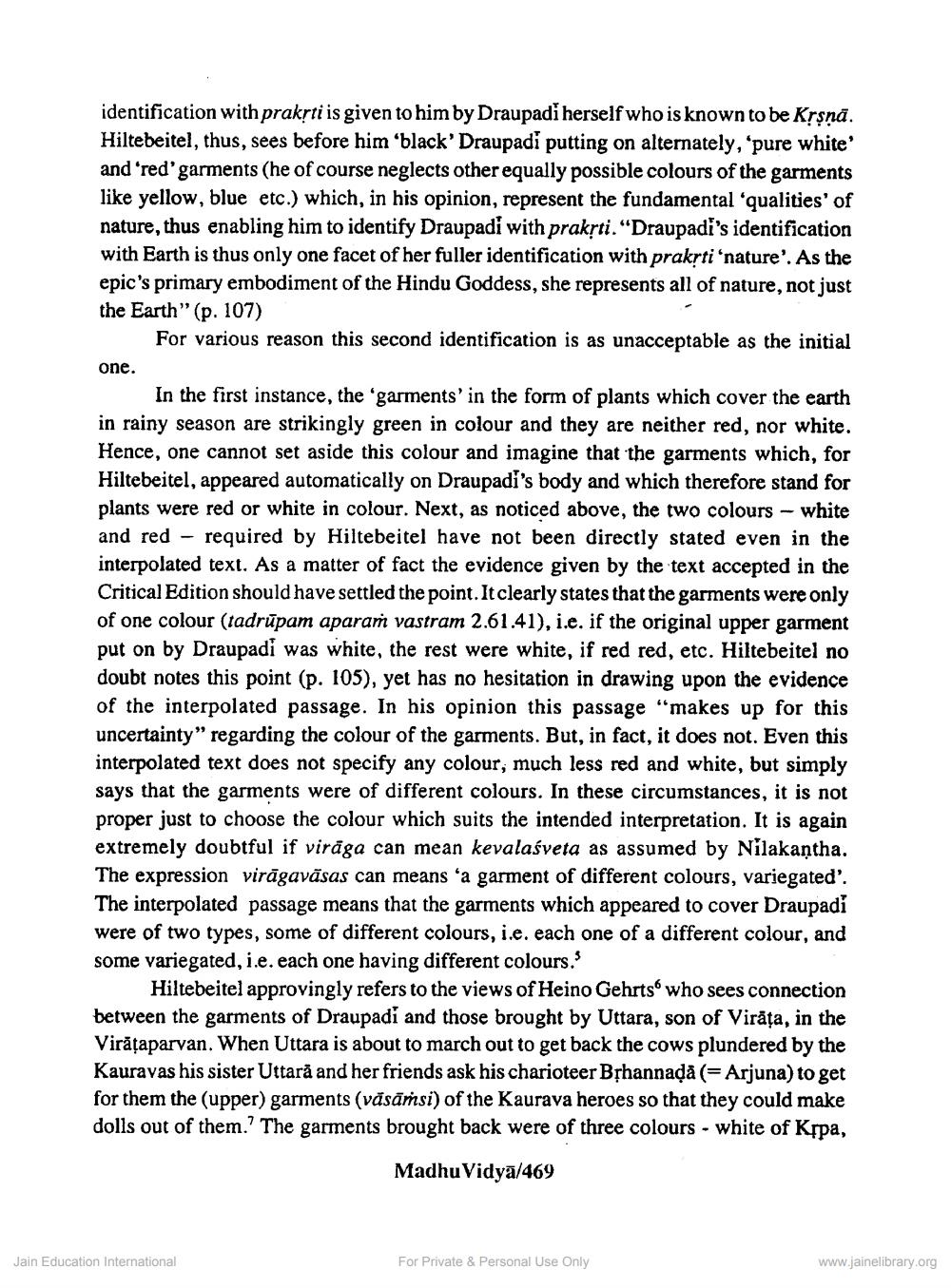________________
identification with prakrti is given to him by Draupadi herself who is known to be Krsna. Hiltebeitel, thus, sees before him 'black' Draupadi putting on alternately, 'pure white' and 'red' garments (he of course neglects other equally possible colours of the garments like yellow, blue etc.) which, in his opinion, represent the fundamental 'qualities' of nature, thus enabling him to identify Draupadi with prakṛti. "Draupadi's identification with Earth is thus only one facet of her fuller identification with prakṛti 'nature'. As the epic's primary embodiment of the Hindu Goddess, she represents all of nature, not just the Earth" (p. 107)
For various reason this second identification is as unacceptable as the initial
one.
In the first instance, the 'garments' in the form of plants which cover the earth in rainy season are strikingly green in colour and they are neither red, nor white. Hence, one cannot set aside this colour and imagine that the garments which, for Hiltebeitel, appeared automatically on Draupadi's body and which therefore stand for plants were red or white in colour. Next, as noticed above, the two colours - white and red required by Hiltebeitel have not been directly stated even in the interpolated text. As a matter of fact the evidence given by the text accepted in the Critical Edition should have settled the point. It clearly states that the garments were only of one colour (tadrupam aparaṁ vastram 2.61.41), i.e. if the original upper garment put on by Draupadi was white, the rest were white, if red red, etc. Hiltebeitel no doubt notes this point (p. 105), yet has no hesitation in drawing upon the evidence of the interpolated passage. In his opinion this passage "makes up for this uncertainty" regarding the colour of the garments. But, in fact, it does not. Even this interpolated text does not specify any colour, much less red and white, but simply says that the garments were of different colours. In these circumstances, it is not proper just to choose the colour which suits the intended interpretation. It is again extremely doubtful if virága can mean kevalaśveta as assumed by Nilakantha. The expression virāgavāsas can means 'a garment of different colours, variegated'. The interpolated passage means that the garments which appeared to cover Draupadi were of two types, some of different colours, i.e. each one of a different colour, and some variegated, i.e. each one having different colours."
-
Hiltebeitel approvingly refers to the views of Heino Gehrts who sees connection between the garments of Draupadi and those brought by Uttara, son of Virăța, in the Virăţaparvan. When Uttara is about to march out to get back the cows plundered by the Kauravas his sister Uttara and her friends ask his charioteer Bṛhannada (= Arjuna) to get for them the (upper) garments (väsäṁsi) of the Kaurava heroes so that they could make dolls out of them." The garments brought back were of three colours - white of Krpa,
Madhu Vidya/469
Jain Education International
For Private & Personal Use Only
www.jainelibrary.org




